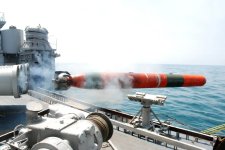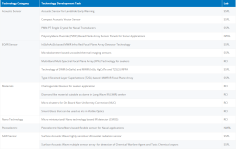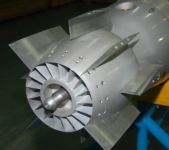Indian Sonar and Torpedo developments
- Thread starter hellbent
- Start date
-
- Tags
- drdo indian navy
You are using an out of date browser. It may not display this or other websites correctly.
You should upgrade or use an alternative browser.
You should upgrade or use an alternative browser.
Important to note.
This is Italian A244-S which we had licenced produced.

This is Shyena or possibly our copy/inspiration from A244S. We exported this to Burma even.

And this is ALWT.
May not be as good as Mk54, but surely comparable to the best of Chinese Light Torpedoes and better than what Russians have.

PS: Open to corrections. I have only put up my best guess.
What happened to the Thermal Propulsion Takshak / Shakti Wire Guided Torpedo project?
IIRC there was another torpedo project with the name Jalastra. Anyone having update on that?What happened to the Thermal Propulsion Takshak / Shakti Wire Guided Torpedo project?
Closed ages ago.What happened to the Thermal Propulsion Takshak / Shakti Wire Guided Torpedo project?
What do you think? Its classical DRDO.why?
Failure to reach desired results.
According to the Defence Ministry annual report of 2015-16, the NSTL and the Indian Navy have jointly conducted a total of 130 technical trials to evaluate the weapon in all aspects of its capabilities.
“A total of 14 User trials including trials in the months of January 2015 and March 2015 with different scenarios have also been completed. Final sentencing of Varunastra UETs meeting was held in September 2015. Varunastra has been accepted by IHQ MoD (Navy) for induction into Services,” the report said

 www.thehindu.com
www.thehindu.com
“A total of 14 User trials including trials in the months of January 2015 and March 2015 with different scenarios have also been completed. Final sentencing of Varunastra UETs meeting was held in September 2015. Varunastra has been accepted by IHQ MoD (Navy) for induction into Services,” the report said

Indigenous heavy weight torpedo hits bull’s eye in live test by Indian Navy
Varunastra was designed and developed by Vizag-based Naval Science and Technological Laboratory (NSTL) under the Defence Research and Development Organisation
A photo of the Varunastra HWT from late 2021:
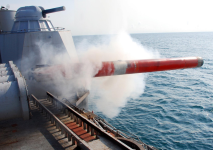
A photo of Varunastra HWT from mid-2023:

The 2021 photo shows 2 rows of 6-bladed contra-rotating open screw type propulsion set up. The newer photo shows a pumpjet propulsion set up. Finally, they have managed to make the transition towards a pumpjet. It seems the recent torpedo test was conducted to verify this propulsion set up.
DRDO's 1st HWT project was the Shakti thermal torpedo project which would have had a 400-500 KW power & would run at 55-60 knots.
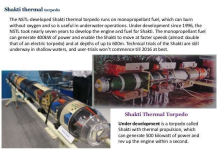
As with many ab-initio projects, DRDO at that time failed to meet the Navy's QRs & this project was killed. But the tech developed for that project lives on.
It was DRDO's 1st attempt at making pumpjets & thus we got to see a lot of different configurations in terms of no. of blades, size/position of blades, blade geometry etc.



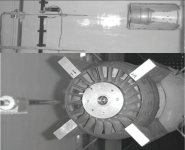
At that time this was the configuration that they eventually settled on.

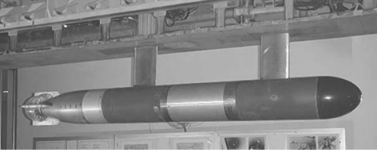
The Varunastra is an electric torpedo as opposed to the Shakti. The Navy has decided against thermal torpedoes as they are prone to inadvertent detonation & can cause catastrophic damage in case of an accident.
The downside of this decision is that making a 400-500 KW battery for a torpedo is not an easy task. The current Ag-O-Zn battery is rated 250 KW & is being upgraded to 300 KW. Even with a 300 KW battery, the 1.5-ton Varunastra HWT can't be propelled faster than 48-50 knots. It would be equivalent to the French F21 torpedo but still somewhat inferior to the Mark 48 torpedo.
Still there are advantages the pumpjet will bring. Reduced acoustic signature, higher range & speed, increased maximum operating depth. But to fully exploit the advantages of the pumpjet the battery has to be at least 400 KW. That would bring the Varunastra on par with the Mark 48 in performance.
Also good on the Navy for purchasing 130+ torpedoes before all the incremental improvements came about. The Navy wanted a F21 equivalent but settled for something inferior for the time being. This provided the DRDO time, funding & user feedback to continue development of the torpedo. This is how projects need to be run.

A photo of Varunastra HWT from mid-2023:

The 2021 photo shows 2 rows of 6-bladed contra-rotating open screw type propulsion set up. The newer photo shows a pumpjet propulsion set up. Finally, they have managed to make the transition towards a pumpjet. It seems the recent torpedo test was conducted to verify this propulsion set up.
DRDO's 1st HWT project was the Shakti thermal torpedo project which would have had a 400-500 KW power & would run at 55-60 knots.

As with many ab-initio projects, DRDO at that time failed to meet the Navy's QRs & this project was killed. But the tech developed for that project lives on.
It was DRDO's 1st attempt at making pumpjets & thus we got to see a lot of different configurations in terms of no. of blades, size/position of blades, blade geometry etc.




At that time this was the configuration that they eventually settled on.


The Varunastra is an electric torpedo as opposed to the Shakti. The Navy has decided against thermal torpedoes as they are prone to inadvertent detonation & can cause catastrophic damage in case of an accident.
The downside of this decision is that making a 400-500 KW battery for a torpedo is not an easy task. The current Ag-O-Zn battery is rated 250 KW & is being upgraded to 300 KW. Even with a 300 KW battery, the 1.5-ton Varunastra HWT can't be propelled faster than 48-50 knots. It would be equivalent to the French F21 torpedo but still somewhat inferior to the Mark 48 torpedo.
Still there are advantages the pumpjet will bring. Reduced acoustic signature, higher range & speed, increased maximum operating depth. But to fully exploit the advantages of the pumpjet the battery has to be at least 400 KW. That would bring the Varunastra on par with the Mark 48 in performance.
Also good on the Navy for purchasing 130+ torpedoes before all the incremental improvements came about. The Navy wanted a F21 equivalent but settled for something inferior for the time being. This provided the DRDO time, funding & user feedback to continue development of the torpedo. This is how projects need to be run.
Sir ji, there are 2 other projects - Jalastra and Takshak. Do you have any information on them?A photo of the Varunastra HWT from late 2021:
View attachment 28614
A photo of Varunastra HWT from mid-2023:
View attachment 28615
The 2021 photo shows 2 rows of 6-bladed contra-rotating open screw type propulsion set up. The newer photo shows a pumpjet propulsion set up. Finally, they have managed to make the transition towards a pumpjet. It seems the recent torpedo test was conducted to verify this propulsion set up.
DRDO's 1st HWT project was the Shakti thermal torpedo project which would have had a 400-500 KW power & would run at 55-60 knots.
View attachment 28616
As with many ab-initio projects, DRDO at that time failed to meet the Navy's QRs & this project was killed. But the tech developed for that project lives on.
It was DRDO's 1st attempt at making pumpjets & thus we got to see a lot of different configurations in terms of no. of blades, size/position of blades, blade geometry etc.
View attachment 28620
View attachment 28619
View attachment 28618
View attachment 28617
At that time this was the configuration that they eventually settled on.
View attachment 28621
View attachment 28622
The Varunastra is an electric torpedo as opposed to the Shakti. The Navy has decided against thermal torpedoes as they are prone to inadvertent detonation & can cause catastrophic damage in case of an accident.
The downside of this decision is that making a 400-500 KW battery for a torpedo is not an easy task. The current Ag-O-Zn battery is rated 250 KW & is being upgraded to 300 KW. Even with a 300 KW battery, the 1.5-ton Varunastra HWT can't be propelled faster than 48-50 knots. It would be equivalent to the French F21 torpedo but still somewhat inferior to the Mark 48 torpedo.
Still there are advantages the pumpjet will bring. Reduced acoustic signature, higher range & speed, increased maximum operating depth. But to fully exploit the advantages of the pumpjet the battery has to be at least 400 KW. That would bring the Varunastra on par with the Mark 48 in performance.
Also good on the Navy for purchasing 130+ torpedoes before all the incremental improvements came about. The Navy wanted a F21 equivalent but settled for something inferior for the time being. This provided the DRDO time, funding & user feedback to continue development of the torpedo. This is how projects need to be run.
Torpedo program names are very confusing to me. As far as I can tell, the HWT scene looks like this:Sir ji, there are 2 other projects - Jalastra and Takshak. Do you have any information on them?
Varunastra (Ship-launched) is the 1st HWT from the NSTL. It will be improved under a program named Electric Heavy Weight Torpedo (EHWT). The EHWT is also ship-launched. Takshak, if I remember correctly, was the name assigned to the submarine launched version of the EHWT. Then there is an air-launched version of the EHWT called Garudastra.
The EHWT is already in user trials phase. DRDO recently got some pontoons to simulate underwater launch of torpedoes, tests are still some time away. No news on the Garudastra so far.
The LWT development/deployment is following a similar trajectory as the HWT:
The Shyena was the 1st LWT from NSTL. It was also the 1st Indian torpedo to be mass manufactured & exported. NSTL developed a significantly improved version with a pumpjet propulsion called the Advanced Light Weight Torpedo (ALWT). ALWT will replace the Shyena in the future to become the Navy's mainstay LWT. Both the Shyena & the ALWT has been successfully drop tested from an aerial platform. ALWT is also used in the SMART project. Performance wise the ALWT is on par with the best LWT in the world.
In mid-2021 we get news of a new "medium weight torpedo" named Jalastara under development. The max range of Varunastra HWT & ALWT are 40 km & 12 km respectively. Apparently, the gap between them is large enough to build another torpedo for the in-between range. Jalastra should be technically the least challenging as the tech needed for its development is available. Yet about 2 years since we 1st heard of the Jalastra there is no updates on it yet. May be its a low priority or may be the Navy killed it, who knows.

Project Shakti Torpedo - Alpha Defense
Earlier Today, a photograph of a mysterious torpedo shared by the PRO of Defence Vishapakatnam left many people intrigued.
 alphadefense.in
alphadefense.in


Key part I noticed was "pump jet propulsion system"?
Project Shakti Torpedo - Alpha Defense
Earlier Today, a photograph of a mysterious torpedo shared by the PRO of Defence Vishapakatnam left many people intrigued.alphadefense.in
View attachment 28674View attachment 28675
Tbh NSTL has been working on this tech for quite some time, was only a matter of time as the tech matured. Remember that NSTL presentation posted quite a while ago where pumpjet propulsor was shown? and Dr S Pillai sir said the same way back 10 years agoKey part I noticed was "pump jet propulsion system"?
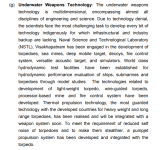

Last edited:

